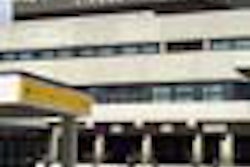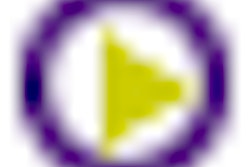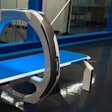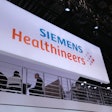An e-mail list service called Eufora is providing European radiologists with a quick and easy way to disseminate information about their specialty. The organizer of the list, a Belgian radiologist, believes the service could become a complement to scientific journals, especially for radiologists in countries without access to quality educational materials.
Eufora was started two years ago by Dr. Erik Ranschaert of Fusieziekenhuis H. Hart in Ninove, Belgium. Ranschaert was looking for an easy way to spur collaboration and discussion among European radiologists, and saw e-mail as the perfect vehicle.
There are now 330 members subscribing to the e-mail list, which Ranschaert believes makes it the largest e-mail list for radiologists in Europe. Some 75% of subscribers are from Europe, with 8% from the U.S. and the rest from other countries around the world.
As an e-mail list service, Eufora is similar in concept to an electronic bulletin board: Members submit messages that are viewed and responded to by the rest of the group. But it differs in that the messages are e-mailed to the entire mailing list, rather than residing on a particular Web site. Subscribers can screen which e-mails they wish to read by the message's subject line, which describes the subspecialty topic of the message.
Subscribers can count on a steady stream of information -- perhaps four to five messages a day -- covering everything from meetings and presentations to equipment comparisons, Internet bulletin board information, and Web sites of interest to radiologists. Doctors often post questions about highly unusual cases, and get answers by the next day. Several radiologists usually respond to postings with specific diagnostic advice or imaging protocols they've learned from similar cases.
Eufora also maintains a Web site, at www.devolder.be/eufora, but the site serves as a vehicle for signing up for the e-mail service rather than as a content repository.
For better organization and wider distribution of the list, Ranschaert has assembled an international group of co-owners (although they do not have an ownership interest in Eufora), consisting of both academic and non-academic radiologists. Each co-owner has responsibility over a specific subspecialty or topic, and they are also asked to stimulate discussion and help publicize the mailing list.
The most recent co-owner to join Eufora is Dr. Markus Grunwald, from the department of diagnostic radiology at the University of Erlangen-Nurenberg. Grunwald is experienced in the world of Internet-based radiology, having developed the COMPARE online teaching database. Grunwald will be responsible for Web- and computer-based training and online didactics.
The co-owners are also responsible for making sure that the discussions on Eufora are relevant to the clinical practice of medical imaging. Messages aren't filtered prior to posting -- doing so would slow down the speed of the discussion, a major advantage of the Internet. But co-owners do have the power to delete from the list any subscribers that submit irrelevant comments. Ranschaert also supervises his mailing list closely to ensure that all participants are MDs; non-MDs, such as vendor representatives, aren't allowed to join, he said.
Ranschaert hopes that Eufora will ultimately become a complement to journals and other more traditional resources as a medium for disseminating information about radiology, especially in countries that are starved for collaboration with more experienced colleagues.
He cites a recent case in which a radiologist from Belarus initiated a discussion on the use of CT contrast for ambulatory patients. The radiologist was only using contrast for hospital-based patients, due to concerns about adverse reactions. After being assured by Eufora colleagues that CT contrast is safe for ambulatory patients, the radiologist changed his policy, according to Ranschaert.
In the future, Ranschaert would like to expand Eufora into more than just an e-mail list server. The list's ability to serve as a conduit for European radiologists to communicate with others should only improve with continuing advances in Internet technology, he believes.
"There is a revolution going on in the type of communication available," Ranschaert said.
By Brian Casey
AuntMinnie.com staff writer
March 30, 2000
Let AuntMinnie.com know what you think about this story.
Copyright © 2000 AuntMinnie.com



















